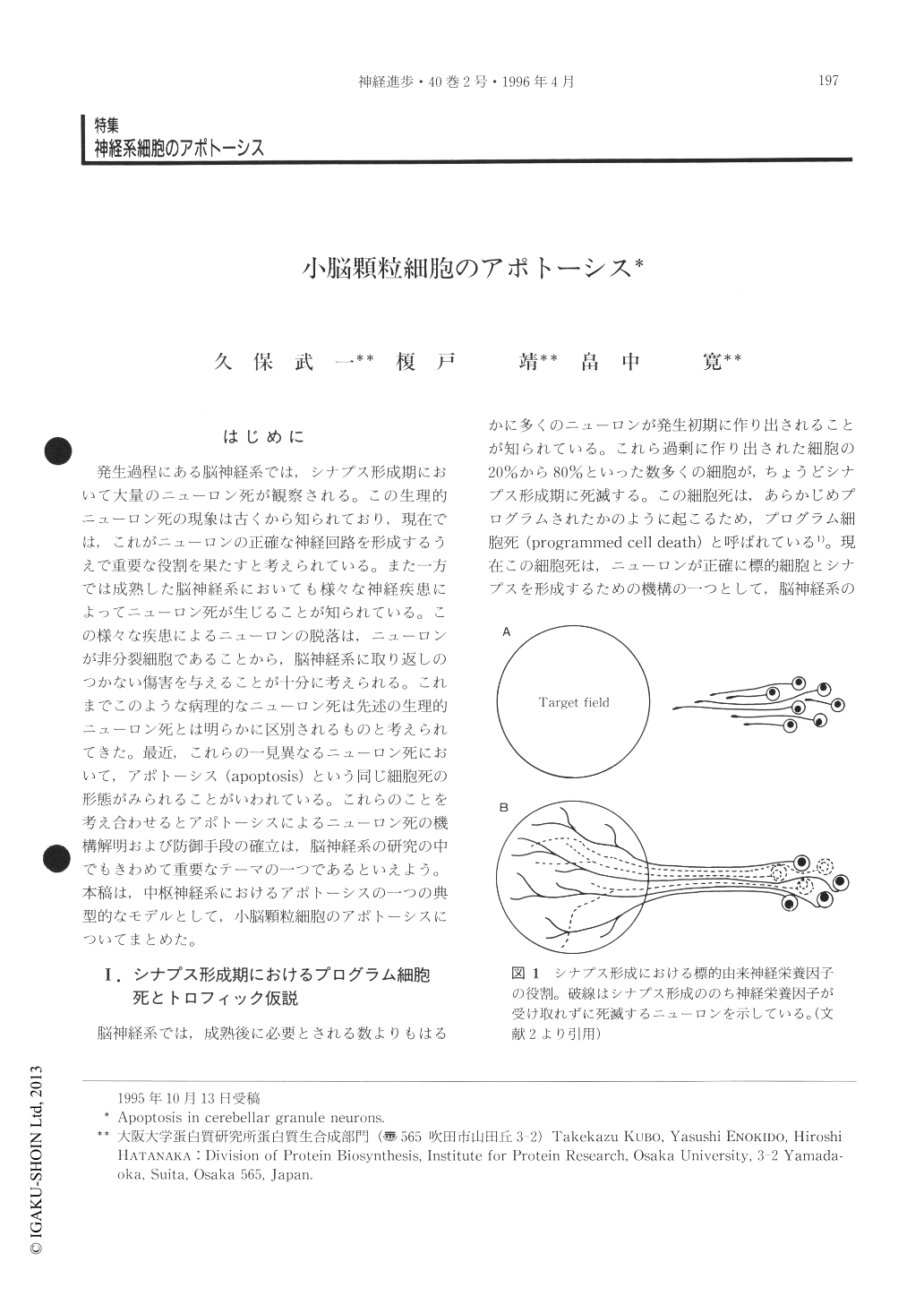Japanese
English
- 有料閲覧
- Abstract 文献概要
- 1ページ目 Look Inside
はじめに
発生過程にある脳神経系では,シナプス形成期において大量のニューロン死が観察される。この生理的ニューロン死の現象は古くから知られており,現在では,これがニューロンの正確な神経回路を形成するうえで重要な役割を果たすと考えられている。また一方では成熟した脳神経系においても様々な神経疾患によってニューロン死が生じることが知られている。この様々な疾患によるニューロンの脱落は,ニューロンが非分裂細胞であることから,脳神経系に取り返しのつかない傷害を与えることが十分に考えられる。これまでこのような病理的なニューロン死は先述の生理的ニューロン死とは明らかに区別されるものと考えられてきた。最近,これらの一見異なるニューロン死において,アポトーシス(apoptosis)という同じ細胞死の形態がみられることがいわれている。これらのことを考え合わせるとアポトーシスによるニューロン死の機構解明および防御手段の確立は,脳神経系の研究の中でもきわめて重要なテーマの一つであるといえよう。本稿は,中枢神経系におけるアポトーシスの一つの典型的なモデルとして,小脳顆粒細胞のアポトーシスについてまとめた。
In the developing nervous system, neurons are generated in excess, and then a large number of them are eliminated. This phenomenon is usually referred to as naturally occurring, or programmed, cell death. This process takes place immediately after neuronal axons reach the target, where specific neurotrophic factors are produced. It is believed that neurons are overproduced and eliminated due to adjusting the number of innervating neurons to the size of the target. Neurons can survive when they receive neurotrophic factors which are released by the target cells, and those which are not supported by neurotrophic factors die.

Copyright © 1996, Igaku-Shoin Ltd. All rights reserved.


